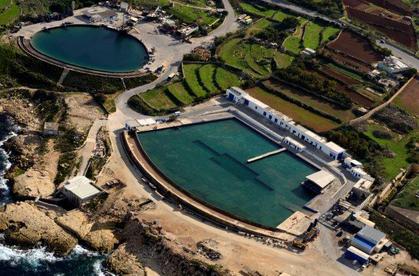Popular & Historic Filming Locations in Malta
Practically the whole of Malta can be seen as a Film and TV studio set. The isles’ historic locations are a no brainer for any director looking for period accuracy, precisely because they’re the real thing! The mixture of architectural cultures also lend the islands a certain flexibility in its representational abilities, being able to stand in for both continental Europe as well as a good portion of the Middle-Eastern world. The generally great weather doesn't hurt either! Dependably not having a rainstorm on the day of a shoot is as important as you might think it is...
In this article we’ll take a closer look at three of the more popular and cinematically historical locations for a film or TV series shoot, along with any filmic history associated with them!
Valletta and other historic cities
The obvious first pick owing to the fact that it’s the nation’s capital, is Valletta. Valletta's mixture of ornate European auberges, such as the grand master's palace and middle-eastern housing, with the traditional balconies and flat roofing, allows a flexibility which few other European locations do. There's also the Grand Harbour, with live shipping coming in and out frequently. A filmmaker's dream of a real-life set that is also adaptable!Apart from Valletta itself, the same can be said for other historic cities on the isles, such as Birgu or Mdina. The latter was in fact used for filming scenes in The Count of Monte Cristo (2002).
The Malta Film Studios
 |
| Photo Courtesy of Malta Film Commission |
This location is perhaps the best known if we're being film-specific. It is a giant, shallow, water tank designed to blend seamlessly with the horizon, giving the illusion of sequences happening in the middle of the ocean, without the need for special effects. It was devised and built in 1963 by Jim Hole and Paul Avellino, a British special effects artist and Maltese construction manager respectively. It was initially called Malta Film Facilities and its use was premiered with films such as the Cold War naval drama The Bedford Incident (1965).
Besides the main 300ft wide, 6ft shallow tank, there is also a second tank intended mainly for underwater filming. This tank is 36ft (11m) deep and was built in 1979 for the movie Raise the Titanic (1980). A special water purification process allows for a visibility otherwise unachievable, such that sometimes impurities are added to the water for a more realistic effect.
Popeye Village
The last of our locations is the infamous Popeye Village. Nowadays a tourist attraction, the 'village' was initially built as a film set for the 1980 musical Popeye, starring Robin Williams, during the latter half of 1979. Whole new access roads had to be paved to Anchor Bay, the sea inlet in which the set is constructed, along with a breakwater to protect it from adverse weather.
Contractors built 20 wooden structures using timber specifically imported over from Holland. The modern tourist attraction's website says that "A 165 international construction crew consumed eight tons of nails and two thousand gallons of paint to finish off this massive set"... that's a lot of nails.
Filming in Malta
While these three locations barely scratch the surface of what Malta has to offer (or has offered) filmicly, they do give a good indication as to the variety of natural and man-made beauty this little rock can provide. With an increasing amount of both foreign and local productions choosing to work on (and within!) our shores, you're only going to see more of the little island, so if you're thinking of shooting a film here soon, get scouting, there's only 316 square kilometres to go around!


Comments
Post a Comment